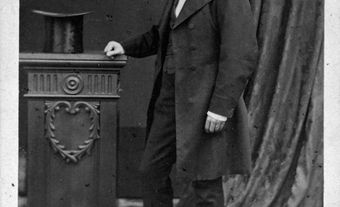This article was originally published in Maclean's Magazine on October 27, 1997
Canadian Shares Nobel Prize
Retired Hamilton restaurateur Max Mintz can still recall the two teenage boys. Following the death of their mother in 1956, David and Myron would often visit Mintz's diner, the Chicken Roost, brought by their father, dentist Jess Scholes. Mintz got to know them well, and hired David, Myron's older brother. "David was the smart one," recalls Mintz. "I thought he was going to take the place over." Myron, his younger brother, was bespectacled, timid, and always seemed preoccupied. "He was a nice, quiet boy," says Mintz. Last week, Mintz was shocked when he learned the unassuming Myron Scholes was named co-winner of the Nobel Prize in economics. His achievement: in 1973, Scholes, who was teaching at the Massachusetts Institute of Technology in Cambridge, Mass., and fellow economist Fisher Black, produced a virtually airtight formula for valuing complex financial deals. Today, their work underpins the trillion-dollar options and derivatives industry. Scholes is still surprised at the profound impact of his discovery. "I never expected the widespread use of the model," Scholes told Maclean's. "It has been very gratifying."
Scholes, 56, a partner in an investment company and professor emeritus at Stanford University in Palo Alto, Calif., shared the $1.4-million prize with Harvard economics professor Robert C. Merton, who refined the formula. Black died of lung cancer in 1995, but today the Black-Scholes equation is routinely punched into computers at institutions as diverse as the Toronto Stock and Winnipeg Grain exchanges. It has brought so much stability to the financial markets that analysts believe it has actually prevented recessions.
Scholes's seminal work was in the options arena. Simply put, an option is a contract giving the owner the right to buy or sell a stock or bond for a preset price in the future. But before 1973, establishing that price had always been left to guesswork, making investing in the products highly dangerous. The Black-Scholes formula, however, removed most of the uncertainty by taking into account a number of factors, including stock volatility, the underlying share price and interest rates. "It was a major insight," says Itzhak Krinsky, a professor of business economics at McMaster University in Hamilton. "They discovered that if you bundle specific securities together they will perform in a certain way."
Scholes was born in the northern Ontario mining town of Timmins where he spent the first 10 years of his life before his father moved the family to Hamilton. In 1961, he graduated from McMaster University with a degree in economics and received his PhD from the University of Chicago in 1969. Michael Sole, now chief of cardiology at Toronto Hospital, grew up with Scholes in Timmins. In the early 1970s, Sole received a fellowship to MIT, where Scholes was then teaching. The two men renewed their friendship and launched a company that sold high-efficiency air purifiers. Despite Scholes's growing reputation as one of the world's best economic minds, they were soon squeezed out of business by a larger firm. But Sole says he was not surprised when his old friend won the Nobel. "Myron suddenly found his love, and that was business and economics," recalls Sole. "He changed from being a good student to someone who became a great mind."
Today, the results of Scholes's genius can be found everywhere in high finance, including the so-called derivatives market. When banks, for example, want to buy a foreign currency, they will often protect themselves against potential losses by hedging the currency against a second security or another asset. To determine whether the investment is sound, they routinely plug the numbers into the Black-Scholes model. But its use is not restricted to financial markets. At the Winnipeg Grain Exchange, the formula is also used to establish the underlying value of a commodity. "Almost anyone who is trading options," says Steve Rive, vice-president of derivative trading at the Toronto Stock Exchange, "is using the Black-Scholes model. It is fundamental to our ability to provide a fair market to investors."
The Black-Scholes equation has also made Scholes and Merton extremely wealthy. Both men are founding partners of Long-Term Capital Management LP of Greenwhich, Conn. The firm uses the Black-Scholes equation to make investment decisions for a highly successful three-year-old hedge fund it operates. So far, Long Term Capital has generated more than $1 billion in revenues, making the two men among the richest Nobel laureates, even before dividing their $1.4-million award. Scholes plans to give some of his prize money to help fund the MIT chair that bears Black's name.
Scholes is still refining his formula and hopes to broaden its use. "I went from my research and teaching phase," says Scholes. "Now, I'm in my implementing phase." Not bad for a shy teenager from Hamilton.
Maclean's October 27, 1997

 Share on Facebook
Share on Facebook Share on X
Share on X Share by Email
Share by Email Share on Google Classroom
Share on Google Classroom


